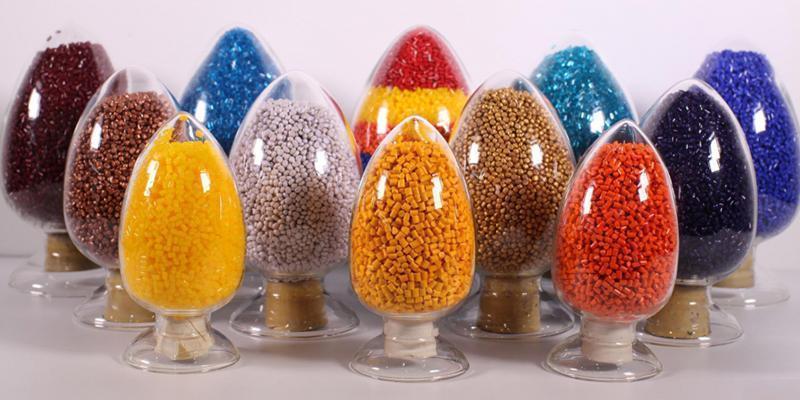Introduction – Why Color Matters in Polycarbonate Applications
Polycarbonate (PC) is one of the most advanced thermoplastics used in modern manufacturing. Known for its high impact strength, transparency, and heat resistance, it is a preferred material in industries such as automotive, electronics, construction, and optics. From clear safety lenses to tinted car interiors, polycarbonate combines performance with aesthetic versatility.
However, its natural form is colorless, and exposure to heat or UV radiation can cause yellowing or fading. To overcome this, polycarbonate pigments are introduced to provide color, improve UV resistance, and maintain long-term stability. Understanding the science and selection of these pigments is essential to ensuring both functionality and visual quality in PC applications.
What Are Polycarbonate Pigments?
Polycarbonate pigments are specialized colorants engineered to withstand the high processing temperatures and chemical structure of PC resin. Because polycarbonate is processed at temperatures between 270 °C and 320 °C, ordinary pigments can easily degrade, discolor, or cause haze if not properly formulated.
These pigments differ from simple dyes. While dyes dissolve into the plastic matrix, pigments remain finely dispersed particles that scatter light to produce color. This allows for better heat stability, opacity control, and color consistency across large production batches.
To ensure compatibility, pigments must also be resistant to hydrolysis and have minimal impact on the polymer’s mechanical strength or transparency — especially in optical applications like lenses or LED covers.

Key Types of Pigments Used in Polycarbonate
-
Organic Pigments
Organic pigments, such as phthalocyanine blues and greens, quinacridone reds, and azo yellows, are valued for their bright, vivid hues. They’re commonly used in consumer electronics and automotive interiors where visual appeal matters most. However, some organic pigments may lose intensity under prolonged heat exposure, so proper stabilization is required. -
Inorganic Pigments
Inorganic pigments like titanium dioxide, iron oxides, and chromium oxides are known for excellent opacity, chemical resistance, and thermal stability. These are typically chosen for applications demanding longevity, UV resistance, or specific performance under harsh conditions. -
Special Effect Pigments
For decorative and luxury applications, metallic and pearlescent pigments create depth, gloss, and reflective effects. These are often used in automotive trims, electronic devices, and high-end product housings to achieve unique finishes.
For industries working with multiple polymers, each material requires specific pigment systems. For example, colorants used in polyolefin pigments or ABS pigments must be adjusted for different chemical and thermal behaviors.
Performance Requirements for Polycarbonate Pigments
Because polycarbonate is a high-performance material, its pigments must meet equally demanding standards. The following properties are essential:
-
Thermal Stability:
Pigments must resist decomposition at molding temperatures. Unstable pigments can cause yellowing or a loss of color brightness. -
Light and UV Resistance:
For outdoor or optical products, lightfast pigments ensure that colors remain stable under sunlight exposure without fading or discoloration. -
Transparency Control:
Some applications, like safety lenses and optical covers, require pigments that maintain transparency, while others (such as housing materials) demand high opacity. The right pigment type ensures the desired visual effect. -
Chemical Compatibility:
Pigments must remain inert and not interact with the polymer matrix or flame-retardant additives, preventing deterioration of the plastic’s mechanical or surface properties.
Processing and Dispersion
The method of incorporating pigments into polycarbonate greatly affects the final product’s color quality and consistency. The three main approaches are:
-
Masterbatch Coloring
Pigments are pre-dispersed into a polymer carrier, forming a concentrated masterbatch. This ensures uniform color distribution and cleaner processing with minimal dust. -
Dry Blending
Pigments are mixed directly with polycarbonate granules before molding. Although cost-effective, this method risks uneven distribution if not carefully controlled. -
Liquid Color Systems
Pigments suspended in liquid carriers can be precisely dosed during injection molding, offering consistency and flexibility for high-volume production.
Proper dispersion is critical. Poorly mixed pigments can lead to surface defects, visible streaks, or reduced mechanical strength due to localized pigment concentration.
Common Applications of Polycarbonate Pigments
Polycarbonate pigments are used wherever performance and appearance must coexist. Major application areas include:
-
Automotive:
Used in headlamp lenses, dashboards, and trim components requiring thermal and UV stability. -
Electronics:
Provides consistent coloration for laptop casings, LED housings, and protective screens. -
Optical & Lighting:
Clear pigments or controlled tints are used in eyewear lenses and light diffusers. -
Construction & Architecture:
Polycarbonate sheets and panels use pigments to achieve custom colors, improved UV resistance, and enhanced durability.
Advantages of High-Quality Polycarbonate Pigments
Investing in premium pigment systems delivers measurable benefits for manufacturers and end-users alike:
-
Enhanced Durability: Maintains color and gloss under heat, UV, and chemical exposure.
-
Superior Aesthetics: Provides clean, uniform color across all molded parts.
-
Improved Efficiency: Reduces waste, reprocessing, and production downtime.
-
Custom Color Development: Enables precise brand matching and product differentiation.
These advantages make polycarbonate pigments a cornerstone of modern polymer engineering — balancing technical performance with visual excellence.
Conclusion
Polycarbonate pigments play an essential role in transforming raw PC resin into a versatile and visually appealing engineering material. By understanding pigment chemistry, processing methods, and performance characteristics, manufacturers can produce components that meet demanding mechanical and aesthetic requirements.
From clear optical lenses to richly colored consumer products, the right pigment selection ensures long-term stability, cost efficiency, and superior end-product value — making it a key factor in high-performance polycarbonate design.






